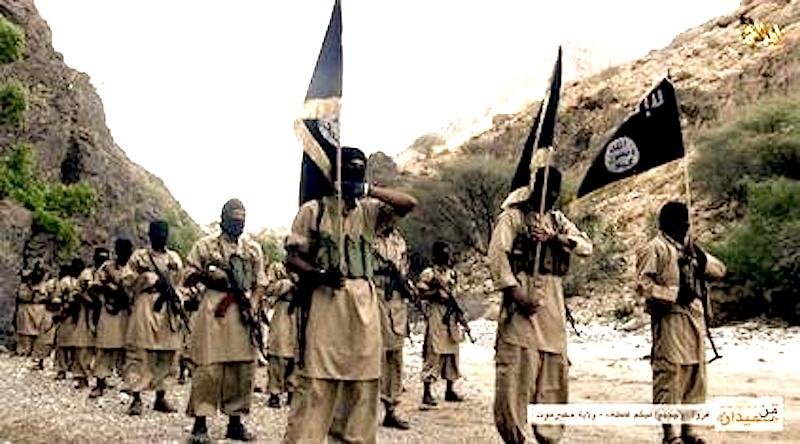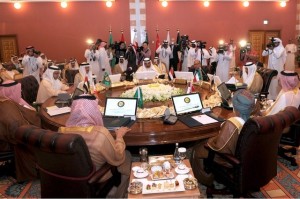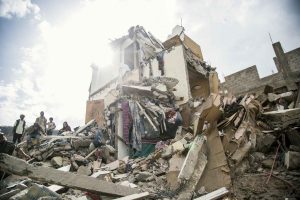by Jonathan Fenton-Harvey
As peace talks to end Yemen’s four-year-long war stall, al-Qaeda carried out a deadly attack the Hadramawt province on May 3 that killed several civilians, showing the faction still poses a threat in Yemen.
Despite being contained in Yemen’s eastern and central provinces of Hadramawt, Shabwa, and Abyan, the faction still poses a deadly threat to the rest of the country, while the conflict environment in which it flourished remains.
Al-Qaeda in the Arabian Peninsula (AQAP) is the transnational faction’s biggest franchise. It gained much territory in Yemen after the Arab Spring, survived a crackdown from the post-Arab Spring government in 2012, then expanded rapidly during the current conflict. According to UN and Yemeni government estimates, it has 6,000-8,000 members as of last year.
It poses a much greater threat than the Islamic State (ISIS or IS) in Yemen, which has failed to embed itself in Yemeni society and establish links with other local factions with the success that AQAP has achieved. After all, al-Qaeda has existed in Yemen since the faction’s earliest days and had built connections with various tribal factions before and during the current war. Compared to other locations, foreign IS recruits struggle to reach Yemen due to the blockade and face security restrictions on entering the country, while al- Qaeda relies on recruiting Yemenis locally.
Along with carrying out various deadly attacks across Yemen, AQAP has also posed an international threat. It has been linked to several global terrorist incidents, including the 2015 Charlie Hebdo massacre in Paris. AQAP has also targeted Westerners with its digital, English-language magazine Inspire, which provides instructions on derailing trains, bomb-making, and other advice for terrorist attacks, while also encouraging violence in Western countries.
However, like other recent al-Qaeda branches, such as Jahbat al-Nusra in Syria, AQAP has focused on regional goals and state-building to secure a powerful domestic base. It had some success in this too, using its financial capabilities, acquired mostly from looting banks and smuggling oil, to provide security for and win approval from parts of Yemeni society.
As Yemen’s state has disintegrated after President Abdrabbuh Mansur Hadi’s exile to Saudi Arabia following the Houthi insurgency and Riyadh’s subsequent bombing campaign, AQAP has had much freedom to expand.
U.S. airstrikes in Yemen have increased almost six-fold during the Trump administration in support of an alleged UAE counter-terrorism campaign against AQAP, which provides cover for the real fight against the Houthis. Abu Dhabi has trained various militias, including the so-called Security Belt, Hadrami Elite Forces, Shabwani Elite Forces, and the “Big Giants.”
The UAE claims that it has pushed AQAP in 2016 from its stronghold Mukalla, Yemen’s fifth-largest city. But in fact, the UAE paid al-Qaeda to withdraw from the city, rather than fighting it, in order to easily allow Emirati forces to increase Abu Dhabi’s hegemony over the south.
Indeed, both the UAE and Saudi Arabia have supported AQAP in their anti-Houthi campaign. Associated Press revealed that both states have given the faction weapons and money, and even recruited al-Qaeda members into the coalition to fight the Houthis. Al-Qaeda fighters have joined the Al Amaliqa brigades, who have been deployed to capture the Houthi-held city of Hodeidah.
Saudi Arabia has long had financial ties to al-Qaeda, according to declassified files, so it is no surprise that the kingdom would back the Yemeni branch, in a conflict where Riyadh pursues greater geopolitical influence. The UAE and Saudi Arabia have supported AQAP for strategic reasons. For instance, AQAP’s existence justifies a continued Emirati presence, to pursue its geopolitical ambitions to control southern Yemen and the key port city of Aden. Yet neither country wants AQAP to grow so extensively that it has an uncontrollable presence in Yemen and threatens their own geopolitical ambitions.
However, since the situation in Yemen is volatile and various local factions can align with al-Qaeda as they have done in the past, AQAP still could expand into various parts of the country.
The conflict has also allowed other extremist groups to emerge, including the Taiz-based, anti-Houthi, Salafist militia of warlord Abu Al-Abbas, who has directly received Emirati money and weapons despite being a U.S.-designated terrorist. Western weapons, sold to the coalition, have indirectly ended up in the hands of al-Qaeda too, according to a CNN report in February. As military equipment increasingly floods into a war zone, with mixed and ambiguous alliances, weapons often end up in unintended hands.
Regardless of the UAE’s narrative of bringing security to Yemen, al-Qaeda flourishes in poverty-stricken lands and failed states. It could do the same in Yemen, especially by continuing to align itself with other UAE-backed militias. AQAP has done so already by evoking a narrative of sectarian warfare. As long as Yemenis remain mored in poverty and despair due to the conflict, AQAP will be able to recruit new members.
Only by ending the war in Yemen, pushing Saudi Arabia and the UAE to cut their support to al-Qaeda, and rebuilding the shattered country can the extremist threat in Yemen begin to diminish.
Jonathan Fenton-Harvey is a roaming journalist and researcher who focuses on conflict, international relations and humanitarian issues within the Middle East and North Africa. He has particularly focused on the Yemen conflict, Libya and Gulf Cooperation Council (GCC) regional foreign policy. He has also studied History and Middle East Studies at the University of Exeter, in the United Kingdom. Follow him on twitter: @jfentonharvey






No mention of KSA supporting Al-Qaeda logistically and financially! Wondering how much Maloun-Bin-Salman (MbS) paid for this nonsense?